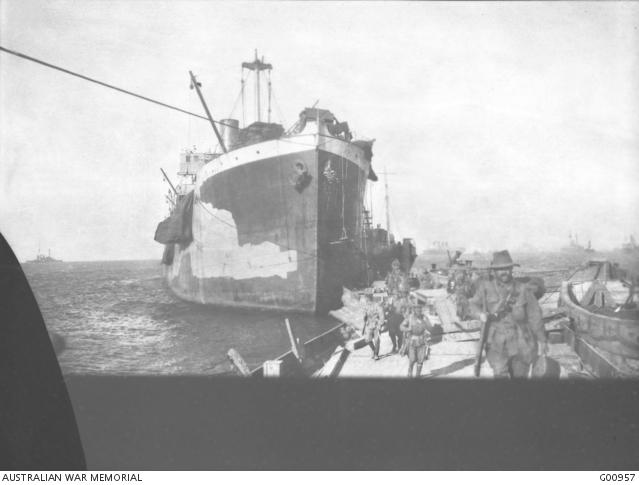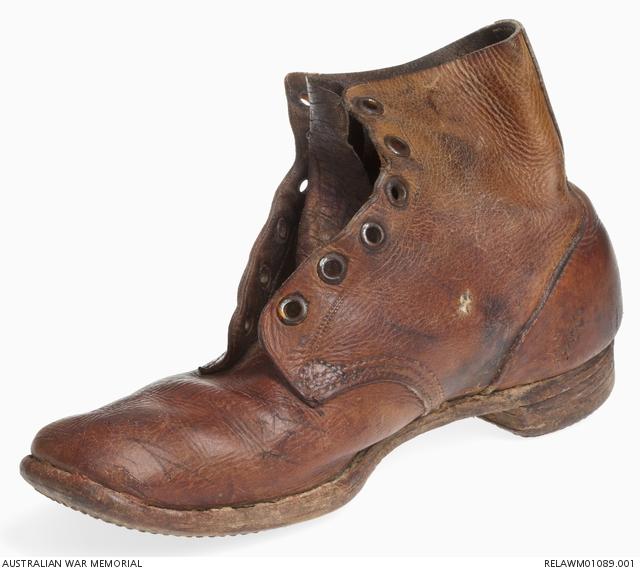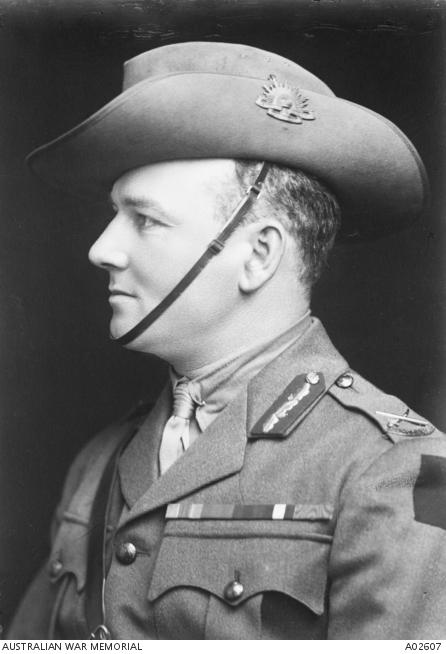Relics of the first Anzac Day
The Australian War Memorial holds within its collection a rich array of artefacts, documents, and photographs from the Gallipoli campaign. Some of these objects serve as reminders of both the ferocity of the action and the immense human suffering that was to be borne by both sides over the coming months.
Bullet-damaged leather boot: Lieutenant Colonel H.E. Elliott, 7th Battalion, AIF
Soon after the landing on Gallipoli on the morning of 25 April 1915 a Turkish bullet hit (then) Lieutenant Colonel Harold “Pompey” Elliott, Commanding Officer of the 7th Battalion, AIF, on the right instep and, passing through his foot, embedded itself in the heel of the boot. The wound made walking impossible, and Elliott was evacuated to Egypt that evening, not re-joining his battalion until early in June. On donating the boots in April 1921 General Elliot described them as, “an old pair of worn ammunition boots which I was wearing on the day of the landing, one showing the tiny hole made by the bullet which wounded me”.
Bronze steam whistle salvaged from the British transport SS River Clyde
At the same time as Australian and New Zealand troops were storming ashore at Anzac Cove, French and British troops were similarly engaged elsewhere in the Dardanelles. A key part of the plan for securing the southern tip of the peninsula was that the River Clyde, a 4,000-tonne collier built in Glasgow in 1904, should be run aground under the guns of the Turkish fort at Sedd el Bahr, named V Beach, in order to land more than 2,000 men from the Royal Munster Fusiliers and Royal Dublin Fusiliers.

Steam whistle from the River Clyde. RELAWM00316
With the ship successfully beached, the men were nevertheless slaughtered in their hundreds as they attempted to exit the vessel’s sally ports or negotiate the machine-gun-swept gangways. Many of those who survived this far either drowned close to the beach under the weight of heavy equipment or were pinned down behind a small ledge at the waterline. Such was the confusion that despite three costly attempts the landing was abandoned until dark, when the survivors were finally able to try again. Six Victoria Crosses were awarded to naval personnel for their actions that morning, including ship commander Edward Unwin.
For the duration of the campaign the River Clyde served as a field dressing station, a breakwater, and a temporary dock, while its condensers were used to supply fresh water to allied troops. In 1919, after the end of the war, the ship was re-floated, repaired at Malta, and sailed the Mediterranean as a merchant ship under the Spanish flag until 1966, when it was sold for scrap. This whistle, carried aboard the River Clyde at the time, was handed over to the Australian War Records Section in 1917, having likely been souvenired at Helles in 1915 or 1916.

The River Clyde, seen in May 1915. AWM G00957
Both General Elliot’s boot and the River Clyde steam whistle are currently on display in the Memorial’s First World War Galleries.
Media Contact
Contact Name
Media team
Contact Email
Contact Phone Number
02 6243 4575
Contact Mobile Number
0409 600 038

